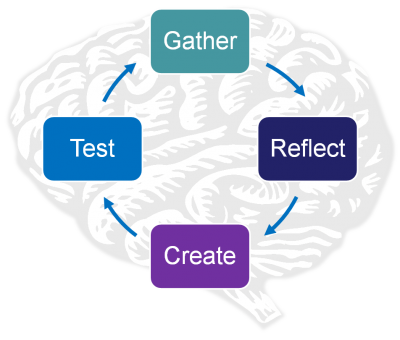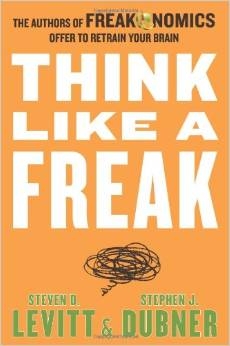 Project managers deal with numerous factors impacting success, including budget constraints, stringent timelines and technical issues. Yet one of the most common issues is communication breakdowns among different personality types on the team. By identifying and codifying different personality types, project managers can enhance the effectiveness of their teams, balancing team member strengths and weaknesses, and improving the overall project outcome.
Project managers deal with numerous factors impacting success, including budget constraints, stringent timelines and technical issues. Yet one of the most common issues is communication breakdowns among different personality types on the team. By identifying and codifying different personality types, project managers can enhance the effectiveness of their teams, balancing team member strengths and weaknesses, and improving the overall project outcome.Based on the work of Swiss psychiatrist Carl Jung, the Myers-Briggs Type Indicator is the most widely used personality assessment tool. It enables people to identify their natural preferences that guide decision-making, determine how they gather information, structure their lives and understand how they derive their personal energy.
To determine their MBTI type, individuals complete a multiple choice questionnaire that asks them to choose their preferences in a wide variety of situations. The results translate into a four-letter type, based on four dimensions, each with two preferences: Source of Energy (Extraversion or Introversion); Information (Sensing or Intuitive); Decisions (Thinking or Feeling); and Structure (Judging or Perceiving). For instance, in terms of how one makes decisions, some people use a more logical, objective thought process (called “Thinking”) while others focus on the impact the decision will have on the people involved (called “Feeling”).
Navigating personalities
The brain dictates how an employee engages with projects and approaches his or her responsibilities. Psychological type preferences can either complement each other, actively supporting success, or interfere with progress by clashing with one another. We’ve all been on teams where one or two personality types dominated; it can be very unpleasant and undermine the success of team’s effort.
But it’s not just about individuals getting along. Preferences don’t only clash or mesh with one another - they can have degrees of harmony or dissonance with the project itself. For different types of projects, different personality types can be a real asset to the team. In her article "Optimizing Myers-Briggs Type Indicator Training: Practical Applications," Jennifer Tucker, Ph.D., outlined the ranging personalities that can impact success.
For instance, some projects are more externally-focused, and can draw on the strengths of extraverts. Other projects may focus more on possibilities, not just the facts. Intuitive types are a real boon in those situations. Likewise, having Feeling types on a project that focuses on the consumer can help the team really understand the end-user in a way that a Thinking type - who relies on logic and objectivity - might miss. A project in the beginning phases can benefit from the Perceiving type, who is open to new information, and resists quick decisions. But, then again, when you need structure and closure, the Judging type is your go-to person.
Planning projects around personalities
For leaders, the trick is to discover the balance that benefits the project and mitigates risk. Managers have to decide how to utilize each personality to their project’s advantage. For example, teams that lean toward introversion may lack the continual communication needed to maintain support from senior leadership. On the other hand, projects heavily influenced by Perceiving types might struggle with expectation management, such as meeting proposed deadlines. To find the right balance, managers should pick team members that bring both preferences to the table, engaging stakeholders while making swift project decisions.
While leaders can benefit by applying personality types to project management, the MBTI isn't the only tool for determining team selection. With the right balance of personalities and effective communication skills, managers can identify individuals who bring the necessary experience for a successful project.

 What is really happening in our brain when we learn?
What is really happening in our brain when we learn?
 Within every organization, employees range in personality types from professionally outgoing to socially reserved. Managing a mix of extraverts and introverts can be a challenge, but encouraging each personality type’s strengths and encouraging both groups to understand these dynamics is key.
Within every organization, employees range in personality types from professionally outgoing to socially reserved. Managing a mix of extraverts and introverts can be a challenge, but encouraging each personality type’s strengths and encouraging both groups to understand these dynamics is key.
 Although the wrong frame in the wrong situation can lead to bad decisions, using the right frame can be beneficial in closing sales with prospective customers.
Although the wrong frame in the wrong situation can lead to bad decisions, using the right frame can be beneficial in closing sales with prospective customers. At Merit, we read a lot. From current thought leaders, to the latest research on critical management skills and adult learning theory. The concepts in these books inform our professional education programs. This month we will give away another of our favorites.
At Merit, we read a lot. From current thought leaders, to the latest research on critical management skills and adult learning theory. The concepts in these books inform our professional education programs. This month we will give away another of our favorites.  At Merit, we read a lot. From current thought leaders, to the latest research on critical management skills and adult learning theory, the concepts in these books inform our professional education programs. This month we'd like to give away another of our favorites, The Checklist Manifesto.
At Merit, we read a lot. From current thought leaders, to the latest research on critical management skills and adult learning theory, the concepts in these books inform our professional education programs. This month we'd like to give away another of our favorites, The Checklist Manifesto. At Merit, we read a lot. From current thought leaders, to the latest research on critical management skills and adult learning theory. The concepts in these books inform our professional education programs and have often helped drive our own business growth. How we'd like to share them with you by giving a book away each month.
At Merit, we read a lot. From current thought leaders, to the latest research on critical management skills and adult learning theory. The concepts in these books inform our professional education programs and have often helped drive our own business growth. How we'd like to share them with you by giving a book away each month.